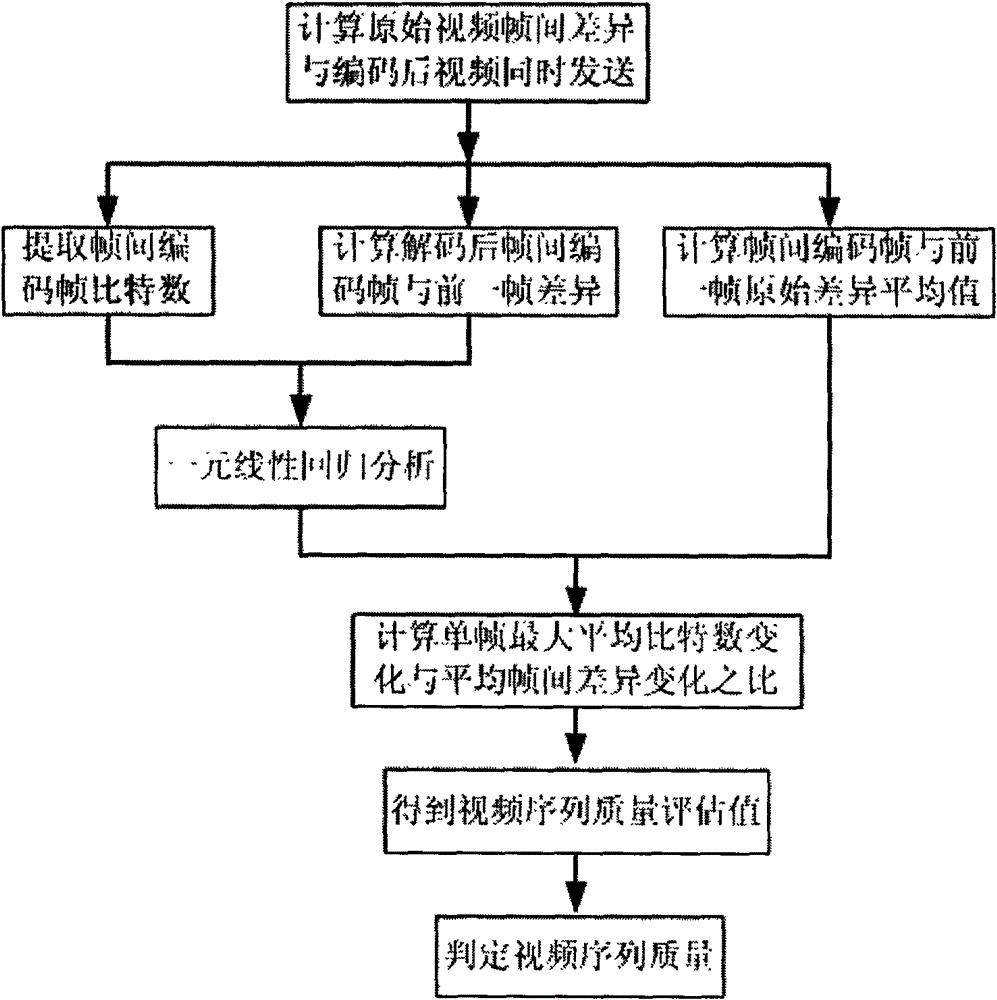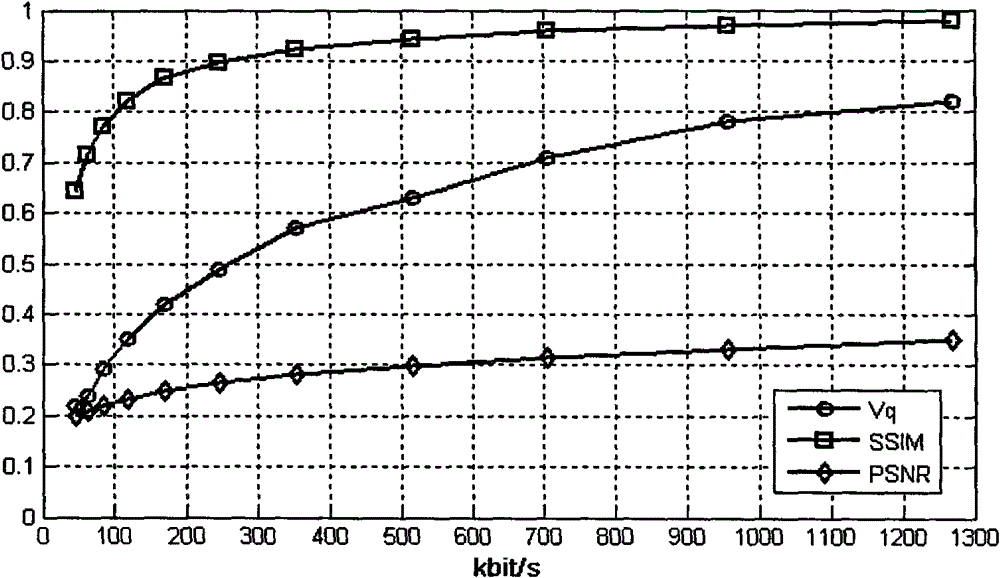Objective assessment method for encoding quality of video sequence
An objective evaluation method and video sequence technology, applied in digital video signal modification, television, electrical components, etc., can solve the problems of large complexity, small amount of reference information data, poor application flexibility, etc., and achieve small amount of data and easy acquisition , the effect of simple method
- Summary
- Abstract
- Description
- Claims
- Application Information
AI Technical Summary
Problems solved by technology
Method used
Image
Examples
Embodiment Construction
[0028] The basic idea of the present invention is to evaluate the quality of a video sequence by using the variation of the average difference between frames before and after coding the video sequence and the variation relationship of the maximum average bit number of a single frame before and after coding. At the encoding end, the peak signal-to-noise ratio (PSNR) method is used to calculate the inter-frame difference between each frame of the original video and the previous frame, and send the result to the receiving end; the receiving end directly extracts the encoded bits of the inter-frame encoding frame from the video stream Then use the PSNR method to calculate the inter-frame difference between the decoded inter-coded frame and its previous frame, and calculate the average value, and calculate the average value of the original inter-frame difference corresponding to the inter-coded frame. The inter-frame difference PSNR between an inter-coded frame and its previous fr...
PUM
 Login to View More
Login to View More Abstract
Description
Claims
Application Information
 Login to View More
Login to View More - R&D
- Intellectual Property
- Life Sciences
- Materials
- Tech Scout
- Unparalleled Data Quality
- Higher Quality Content
- 60% Fewer Hallucinations
Browse by: Latest US Patents, China's latest patents, Technical Efficacy Thesaurus, Application Domain, Technology Topic, Popular Technical Reports.
© 2025 PatSnap. All rights reserved.Legal|Privacy policy|Modern Slavery Act Transparency Statement|Sitemap|About US| Contact US: help@patsnap.com



